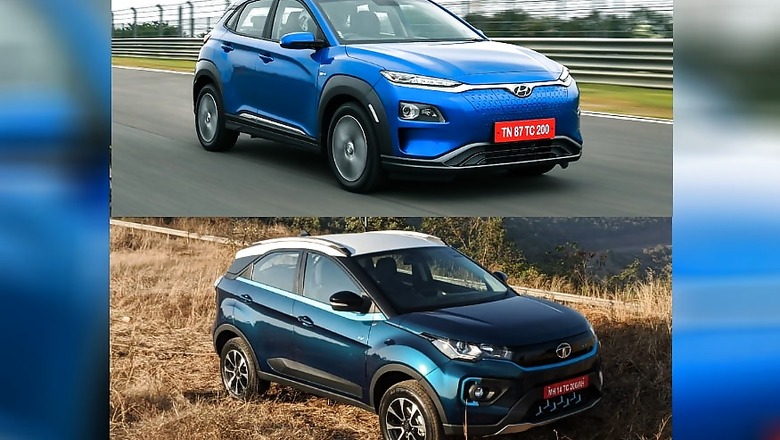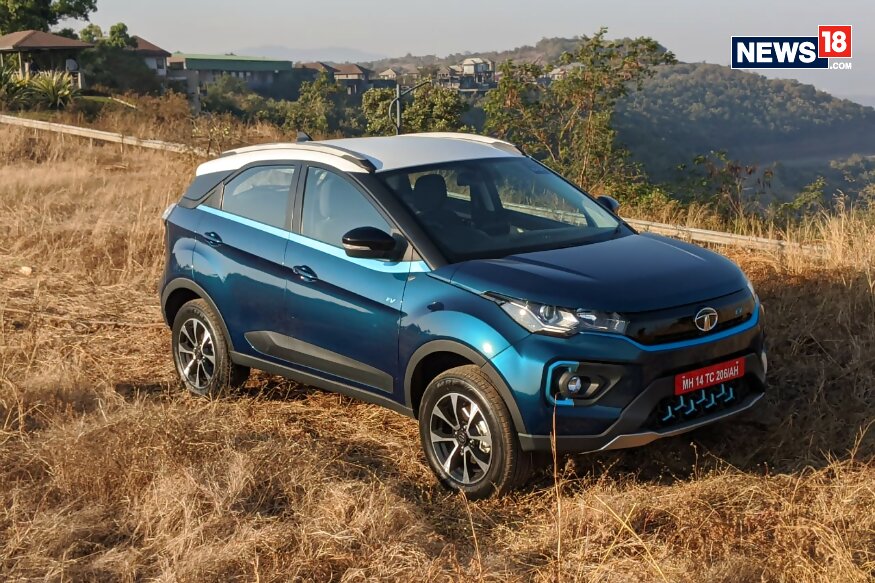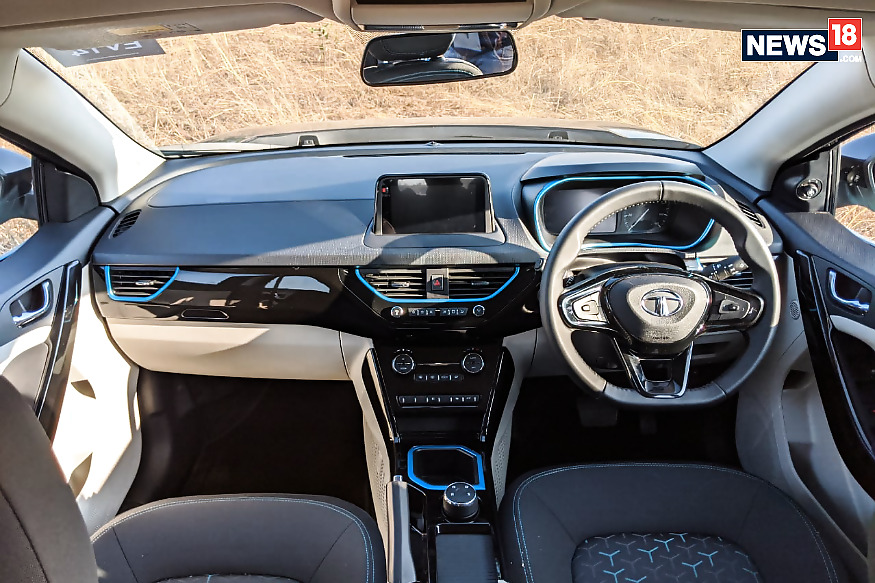
views
The shift towards electric vehicles will be imminent in the coming few years as India extensively pushes for cleaner alternatives to fossil-fuel-powered vehicles. The EV segment in India, subsequently, has become the most sought-after segment in very little time. Combine this with India’s love for SUVs and manufacturers are expecting to hit the bull’s eye to establish their product in the market.
At the moment, the electric SUV segment features three offerings from Tata, Hyundai and MG respectively. While Hyundai’s Kona and MG’s ZS EV is priced at a rung higher than the Nexon EV, the latter is expected to realize an EV for the masses. Hence, we put India’s first homemade SUV against the first offering in the segment, Hyundai Kona Electric.

Tata Nexon EV Design
A fleeting glimpse of the car won’t suggest a lot of changes from its ICE sibling. However, a closer look suggests otherwise. The front grill no more serves the purpose of feeding air into the engine and is replaced by a black gloss grille panel. On either side of the new grille is a new headlight that comes with projector headlamps, and a large fog light enclosure. The lower lip beneath the grille also comes with tri-star elements that come with blue accents to speak its electric identity. Tata is also offering a dual-tone paint scheme that comes with a white coloured roof.
It gets bigger wheel arches and skid plates along with a raised front that gives the SUV a rather impressive look.
Hyundai Kona Design
The Hyundai Kona garnered impressive response upon its launch in India. Just like the ZS electric mimics its gasoline sibling, the Kona Electric also takes major design cues from the standard Kona sold abroad. The first thing that will catch your attention is the face of the car which is different because there is no grille at the front, as there is no need of a radiator as since it doesn’t have a regular combustion engine under the hood. What you get instead is fine detailing at its place that looks fantastic and also houses the charging port which can only be opened when the car is unlocked.
The Daytime Running Lights are housed up top which is seamlessly connected to each other and the headlamps are placed down below. Coming to the sides, you will see a lot of body cladding which gives it a bit of a rugged look, adding to that SUV persona. But the highlight is the wheels which look terrific and almost as if they belong to a concept car.
At the back, you get smart-looking LED tail lamps. The indicators, reverse light and the rear fog lamp are housed down below and is encompassed by a huge amount of body cladding. Overall, the car looks amazing and futuristic and yet, not so different and out of place as if it is screaming that it is an electric car.

(Image courtesy: Manav Sinha/News18.com)
Tata Nexon EV Interiors
Tata’s impressive design language makes its way on the inside too, where the car’s dual-tone cabin grabs attention first. Dominating the dash is a 7.0-inch touchscreen infotainment system. The instrument cluster on the Nexon EV is the same unit that is derived from the recently-launched Altroz premium hatchback.
The blue accents on the inside are carried over to the inside too which means that the car gets ample of blue accents on the inside as well. The traditional gear lever on the car has been replaced by a rotary knob lever. The glovebox door in the front can double as a tray to hold cups which is quite innovative. Features wise, the Nexon EV gets a sunroof, auto headlights and auto wipers in the top-spec model.
Hyundai Kona Electric Interiors
And this continues even when you step inside the Kona as there is nothing weird or different, except that there is no gear lever protruding out of the centre console. Instead, you operate the car through four buttons which are meant to select between Park, Neutral, Drive and Reverse.
Other than that, the cabin feels familiar to a high-end Hyundai car and the build quality, finishing and the quality of products used is top-notch as well giving the cabin a premium feel. There are enough compartment spaces all around and it gets the ergonomics spot on. You also get things like a push-button start, electronic parking brake and a wireless charging pad for your smartphone that is cleverly concealed when not needed.
Then, there are heated as well as cooled seats for both passenger and the driver which is a great addition. Lastly, the seats are electronically adjustable, the outside rearview mirrors are heated and in case you are wondering, yes you get a large electric sunroof as well.
Tata Nexon Battery, Range and Charging
The Tata Nexon Gets a 30.2 kWh battery pack with an IP67 rating can also be charged using a DC charger that can top it up to 80 per cent battery in 1 hour. The electric motor is rated at 129 ps and 245 Nm. Tata claims 300+ km on a single charge and the battery can be charged in under 8 hours with the help of a complimentary home mounted AC charger that the company will provide.
Hyundai Kona Battery, Range and Charging
The Hyundai Kona gets a 39.2 kWh battery that makes the equivalent of 136 PS of power and 395 NM of torque. As per Hyundai, the battery can be charged up from 0-100 per cent through the complimentary wall-mounted AC charger that you get with the car in about 6 hours of time and can charge a range of 50 km in one hour. You also get a portable charger that can be plugged into any regular power socket that gives a range of 50 km in three hours and takes 19 hours to charge the battery completely. And finally, there is the DC fast charger that will be placed at Hyundai showrooms and select fuel pumps that can charge the car from 0-100 per cent in just an hour.




















Comments
0 comment